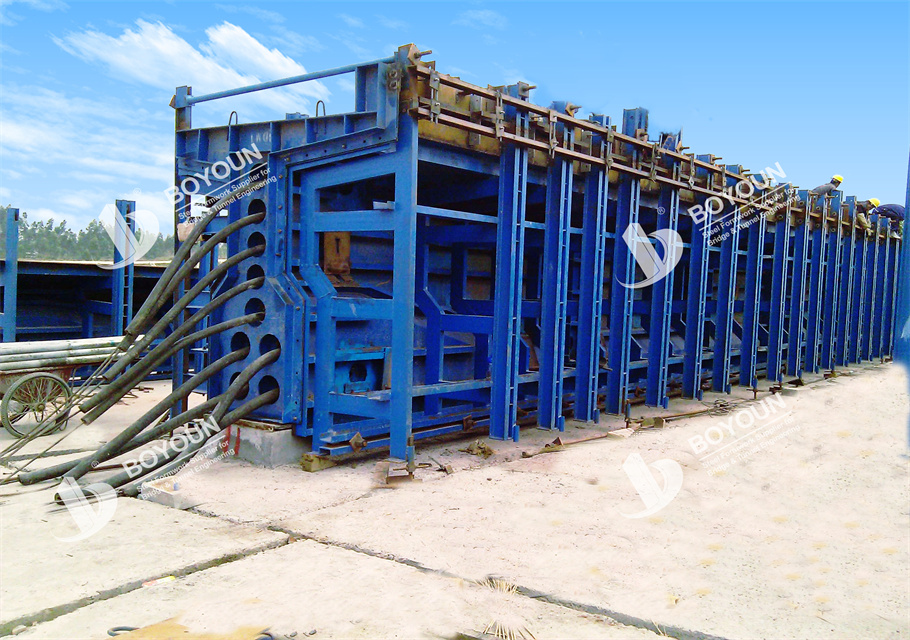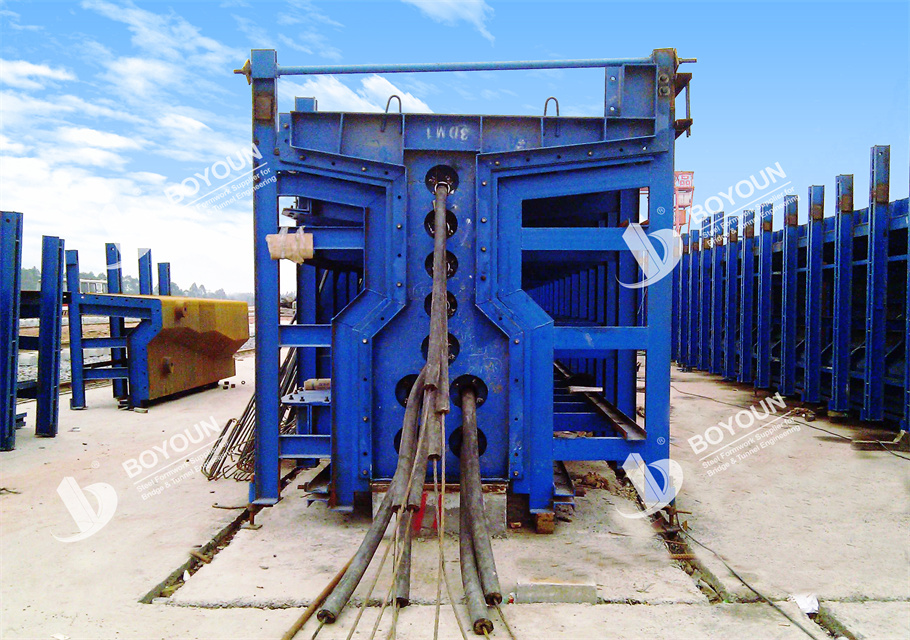In the previous article, we discussed the common appearance quality problems of precast concrete T-beams during construction and the reasons behind them. In this article, we will introduce the treatment methods for common concrete T-beam problems one by one.
(1) Use rounded corners to transition the junction of the web and flange, which can reduce the stress at the junction.
(2) Control the concrete's slump reasonably.
(3) Properly and moderately vibrate and compact the concrete to ensure it reaches the required compactness and does not separate. After finishing the surface, apply pressure to help reduce shrinkage.
(4) After concrete has fully hardened, it needs to be covered promptly to maintain surface moisture and prevent cracks from occurring due to exposure.

After shrinkage cracks appear in the precast concrete T-beam, if the cracks are small and shallow, cement grout can be injected into the cracks, compacted and then covered and cured. Alternatively, small shallow cracks can be cleaned and then coated with epoxy putty after drying, or sealed with epoxy glass cloth. If the cracks are large or through, epoxy resin must be poured and then coated and sealed with epoxy resin putty.
(1) Carefully clean the formwork before pouring concrete, and the release agent for the formwork is important. Long-lasting release agents should be chosen whenever possible and should be evenly applied without missing areas.
(2) Regulate the thickness of the concrete layers to a reasonable extent. When vibrating, use the "fast insertion and slow withdrawal" method to penetrate into the lower concrete layer 5-10cm, control the insertion duration (usually 20s), and stop vibrating when all air bubbles on the surface are completely eliminated and the surface is smooth.
(3) If vibration is desired, the selection of a vibrating device should be based on the actual conditions of the working section to ensure effective removal of air bubbles. For instance, when vibrating the upper part of the web or the flange, an inserted vibrator should be used; when vibrating below the horseshoe, an attached vibrator should be used, and so on.
(4) Scientifically arrange the construction process and ensure close connections between each process.

In general, burl only affects the appearance of T-beams and does not affect the concrete structure, so it is not necessary to treat burl. If treatment is necessary for aesthetic purposes, it can be done in the following ways: Firstly, remove stains and oil stains from the burl by scrubbing with a diluted oxalic acid solution and then moistening the surface with water. Secondly, prepare cement mortar by using fine sand and original cement, with a maximum particle size of 1mm for sand and a mixing ratio of 1:2.5 or 1:2. If necessary, white cement can be added for color adjustment. Thirdly, use a scraper to press the mortar into the burl spots, then level and finish it. Fourthly, cover the treated burl with gunny bags or straw mats for moisturizing and curing.
(1) Ensure continuous pouring of concrete. Since T-beams require long pouring time, an appropriate amount of water reducer should be added to prolong the initial and final setting time of the concrete, which can improve its workability.
(2) Maintain strict control over the pouring process. The pouring process should start at one end of the formwork and adopt a layered and segmented pouring method, with the order of pouring being horseshoe-web-flange, ensuring a layer thickness of about 30cm.
(3) When using an inserted vibrator, strict control should be placed on the depth of insertion into the lower concrete layer, usually 5-10cm, which helps to effectively connect the upper and lower concrete layers.
When dealing with false layering caused by grease issues, only sanding with sandpaper until the concrete's natural color is revealed is necessary. If layering does not affect the stability of the T-beam structure, there is no need for treatment. However, for aesthetic reasons, if treatment is required, refer to the color similar to the concrete, use black and white cement to prepare a mixture, and paint or spray it on the layered area. If the weak interlayer is affecting the stability of the T-beam structure, the treatment method is similar to dealing with construction joints. If it is a thin interlayer with small gaps, the loose concrete structure in the interlayer can be removed, and then 1:2-1:3 cement mortar can be filled and smoothed. If it is a thick interlayer with large gaps, the concrete in that area needs to be completely chiseled out and then repaired based on the actual condition of the interlayer, similar to repairing honeycomb holes.
The concrete mixing process must strictly adhere to the concrete mix design standards, thoroughly and uniformly mix the concrete, and ensure that the concrete retains good water retention and workability. It 's crucial not to change or adjust the slump and mix proportions of the concrete.
If the spots on the concrete surface are black, simply use sandpaper to sand until the concrete's natural color is revealed. If the spots on the concrete surface are white and not very severe, there is no need for treatment. If there are large white spots and the concrete is loose, the repair methods for burl can be used.
based on the analysis above, it can be seen that there are various appearance quality issues with precast concrete T-beams, such as color difference, layering, honeycomb, and shrinkage cracks. These problems have multiple causes. Different technical methods and basic polishing methods can be used to repair the appearance quality problems of concrete. This improves the appearance of T-beams, ensures the quality and safety of bridges, and greatly improves construction progress and reduces costs, resulting in good economic benefits.

International Department: Room 2507-2508, Tower C of Wanda Plaza, Tongzhou District, Beijing 101118, China.
+86-13021287080
info@boyoun.cn